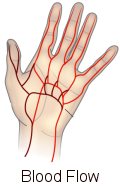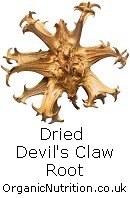How to get some relief from arthritis and joint pains - Page 2
Carrying on from the previous page, here is some more information which may help to ease this discomfort and bring about some arthritis relief.
What can be done about arthritis?
There are many things that can help.
Firstly, you should look at your overall lifestyle and try to make some healthy changes. An unhealthy diet can be a contributor and also a lack of exercise.
We usually recommend that a person cuts down on eating too much fatty food, and also to reduce the amount of dairy products and animal fats they eat.
In terms of actually increasing movement and flexibility in an area, we recommend gentle massage and stretching. There are many tips on the improving circulation page which can really benefit arthritis. Here are some more tips:
Ginger - this may be of help
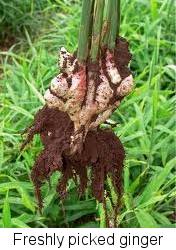 Ginger is a fantastic herb. It has been used for the treatment of many aliments. Studies show it is very beneficial in relieving arthritis. Its anti-inflammatory properties make it a well know arthritis treatment.
Ginger is a fantastic herb. It has been used for the treatment of many aliments. Studies show it is very beneficial in relieving arthritis. Its anti-inflammatory properties make it a well know arthritis treatment.
Ginger contains zingibain, a special proteolytic* enzyme. Research shows that proteolytic enzymes have anti-inflammatory properties. Taken as a tincture, capsule, as a tea or fresh, it does not have any reported side effects to high dosages. A dish prepared with ginger will actually give you a medicinal dose of the herb.
*proteolytic: the hydrolysis of proteins into simpler compounds by the action of enzymes.
The Power of Cayenne
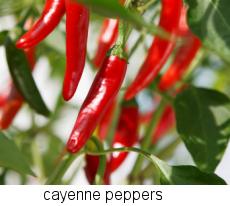 Cayenne Pepper or Red Pepper ( Capsicum frutescens ) is another wonderful herb, with a wide range of medical properties to heal the body. Considered one of the best local and circulatory stimulants, cayenne may be used externally for poor circulation, unbroken chilblains and pains associated with arthritis and lumbago.
Cayenne Pepper or Red Pepper ( Capsicum frutescens ) is another wonderful herb, with a wide range of medical properties to heal the body. Considered one of the best local and circulatory stimulants, cayenne may be used externally for poor circulation, unbroken chilblains and pains associated with arthritis and lumbago.
Capsicum creams are readily available or you can add a few drops of cayenne tincture to an ointment. If you do add to a cream, use sparingly at first gradually increasing the dosage.
Cayenne can be very hot and some people are sensitive. So test it first. Taken internally cayenne stimulates the heart, regulating the blood flow and strengthening the arteries and capillaries. Cayenne also contains capsaicin, a pain-relieving chemical. This also triggers the body to release endorphins, natures own opiates. Take cayenne as a tincture for fast acting absorption, and include the spice in your food.
Garlic and Ginkgo Biloba
Both garlic and ginkgo biloba have been shown to help with circulation and improve blood flow. This is important where arthritis is concerned. You have to try to improve your circulation. This will help bring oxygen to the affected area and take away harmful deposits which have built up.
All of these herbs may help. We have produced a special formula which includes all four of these herbs: ginger, cayenne, garlic and ginkgo biloba. Click here to can see more information about the circulation formula.
Other things which may help:
Bromelain a proteclytic enzyme present in pineapples helps prevent inflammation. Bromelain helps the body get rid if immune antigen complex compounds that are inflicted in some arthritic conditions In addition to zingibain and bromelain there are other proteclytic enzymes that have similar effects. Kiwifruit, paw paw and figs are excellent sources. Calcium is always needed by the body and especially to aid in the prevention of osteoporosis.
Food and herbs high in calcium are : Alfalfa, Liquorice, Red clover shoots, Camomile, Chives, Coltsfoot, Dandelion, Horsetail, Meadowsweet, Nettle, Plantain, Watercress, Cabbage, Thyme and basil.
Devils Claw is a tuber found in South Africa contains a glycoside called harpagoside that helps to reduce inflammation in joints. Best taken in the tincture form especially for inflamed joints. Also good for itchy skin with no obvious cause. One caution, this herb should be avoided during pregnancy.
Additional herbs that will assist in treating arthritis are: Turmeric, Willow a natural pain killer, Liquorice which has anti-inflammatory qualities, rosemary, oregano, basil, camphor, celery seed, meadowsweet.
Stinging Nettles have been used for thousands of years!
Nature provides us with many plants that will aid in the relieving of joint pain. The most radical and perhaps the most daunting is Stinging Nettles. (You can use nettle without the sting - click here).
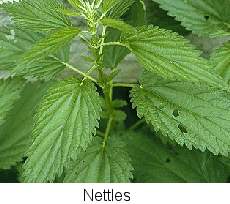 It is called urtication - from nettles botanical name, Utrica dioica- and dates back to the biblical times. Quite simply the plant is grasped in a gloved hand and the stiff, swollen joint is swatted, thrashed with the sting. Urtication often provides considerable relief. The tiny stingers of the nettle plant actually provide microinjections of several chemicals, one of which is histamine.
It is called urtication - from nettles botanical name, Utrica dioica- and dates back to the biblical times. Quite simply the plant is grasped in a gloved hand and the stiff, swollen joint is swatted, thrashed with the sting. Urtication often provides considerable relief. The tiny stingers of the nettle plant actually provide microinjections of several chemicals, one of which is histamine.
The theory is, these chemicals, as well as causing the sting, trigger anti-inflammatory action by the body and so relieve arthritis. This is an ancient folklore, that seems to work for many people all over the world. Nettles grow in may countries and in each stinging nettles has developed a reputation as a treatment for arthritis. For the less adventurous of us, a fresh nettle tea or eating nettles will offer the same long term benefits. Gently steam the young tender leaves, and enjoy as a vegetable. They do lose the stinging effect when cooked!


